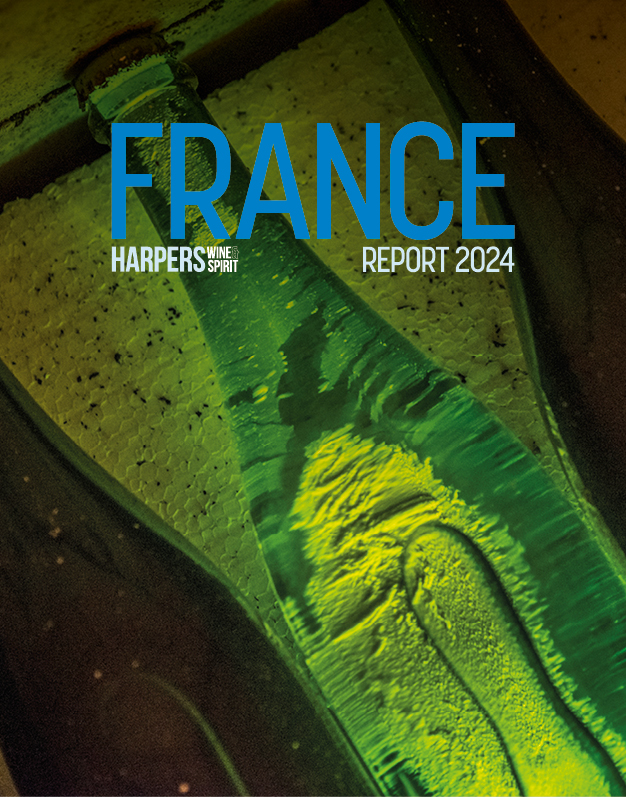
Vranken-Pommery tests the waters of vine density in English ‘trials’
Vranken-Pommery’s English wine ‘trials’ at its Pinglestone Estate in Hampshire could prompt viticulture changes in Champagne, the house has said, with Pinglestone being used as a ‘laboratory’ where findings on lowering vine density could be taken across the Channel.
Vranken-Pommery’s (VPM) English vineyard has half the vine density compared with its Champagne vineyards. Now, Harpers can reveal that trials will assist the Vranken-Pommery team in its efforts to reduce vine density in Champagne, following a rule change in September.
“We have about 10,000 vines per ha in Champagne compared to 5,000 vines per ha here,” said Pierre-Hubert Crozat, Vranken-Pommery’s Champagne and English sparkling winemaker.
“So Pinglestone is a laboratory, where we can do trials to know how vineyards adapt to lower vine density.”
In September, France’s appellation body, the INAO (Institut National De L’Origin et de la Qualité), adopted a measure to reduce the mandatory density of planting in Champagne from 8,000 vines per ha to 6,000 vines per ha.
It is understood that vine density reduction in Champagne may lead to the reduction of CO2 emissions on vineyards and help producers reduce chemical inputs. Champagne growers are also poised to experiment with Voltis, a disease resistant grape variety.
In March this year, Vranken-Pommery blamed rainfall and crop losses in 2021 on its decision to reverse a move to convert the majority of its Champagne vineyards to organic viticulture.
In England, where the house has planted 3kms of trees, the company does not use herbicides. However, the local climate means that the vineyards are not, and cannot, currently be fully organic.
Crozat admitted global warming had prompted concerns over acidity levels in Champagne grapes. However, acidity levels in its English Chardonnay grapes – with a pH level of between 2.9 and 2.95 – remained much higher than in Vranken-Pommery’s Chardonnay grapes in Champagne.
Sunburn Harvest 2022
Despite Pinot Noir grapes (clones 459 and 777) reaching optimal ripeness this year, Vranken-Pommery showed how west-facing grapes had been hit by sunburn.
“It’s the first time in the UK that we had sunburn. This first happened in Champagne six or seven years ago,” said Clement Pierlot, Vranken-Pommery’s cellarmaster. However, he added that ripeness levels for clean bunches of Pinot Noir (with a potential alcohol level of 10 degrees) were “much better” this year, compared with 2021.
UK Met Office provisional data shows that the first nine months of 2022, combined, were the warmest on record. But Pierlot warned that rain in September meant that the skins of grapes were more fragile. VPM said it expected a bigger harvest this year than in 2021, despite smaller but more concentrated yields in some areas following spring frost on April 2. “Our vineyards are well exposed and good for ripeness, but are sensitive to frost,” Pierlot said.
Expansion in England
This week, VPM released its latest non-vintage Louis Pommery England sparkling wine (100% malolactic fermentation, 8g/l dosage) made predominately from the lauded 2018 vintage, of which 15% is made of reserve wines from 2016 and 2017.
“The wine is a question of blends. We are making Louis Pommery England in the same spirit as in Champagne. With the 2018 base wine we are almost close to the final [optimal] blend,” said Pierlot.
“Thanks to the use of reserve wines, we can find a good balance between maturity and the freshness and acidity of the English terroir, together with a nice aromatic profile of red fruits,” Crozat added. Vranken-Pommery announced that it would also be making vintage wines, starting from the 2020 harvest, a part of a further qualitative evolution in production.
Having become the first Champagne house to produce English wine, Vranken-Pommery aims to expand production to between 200 and 250,000 bottles a year by 2024, excluding reserve wine storage, on at least 40 ha of vineyards.
Vranken-Pommery, is one of the biggest Champagne producers. In Hampshire, it uses Hattingley Valley’s winery to make its traditional method English sparkling wines, but it said it was ‘hopeful’ that Winchester City Council would, in December, approve its application to build a winery on its Pinglestone Estate near Alresford.
Keywords:
- wine
- UK
- Champagne
- English
- Vineyards
- grapes
- first
- Pommery
- ha
- INAO
- vranken
- density
- vranken pommery
- vine density
- per ha
- vines per
- 000 vines
- 000 vines per
- louis pommery england
- 2018 base wine
- final optimal blend
- english terroir together
- VPM







